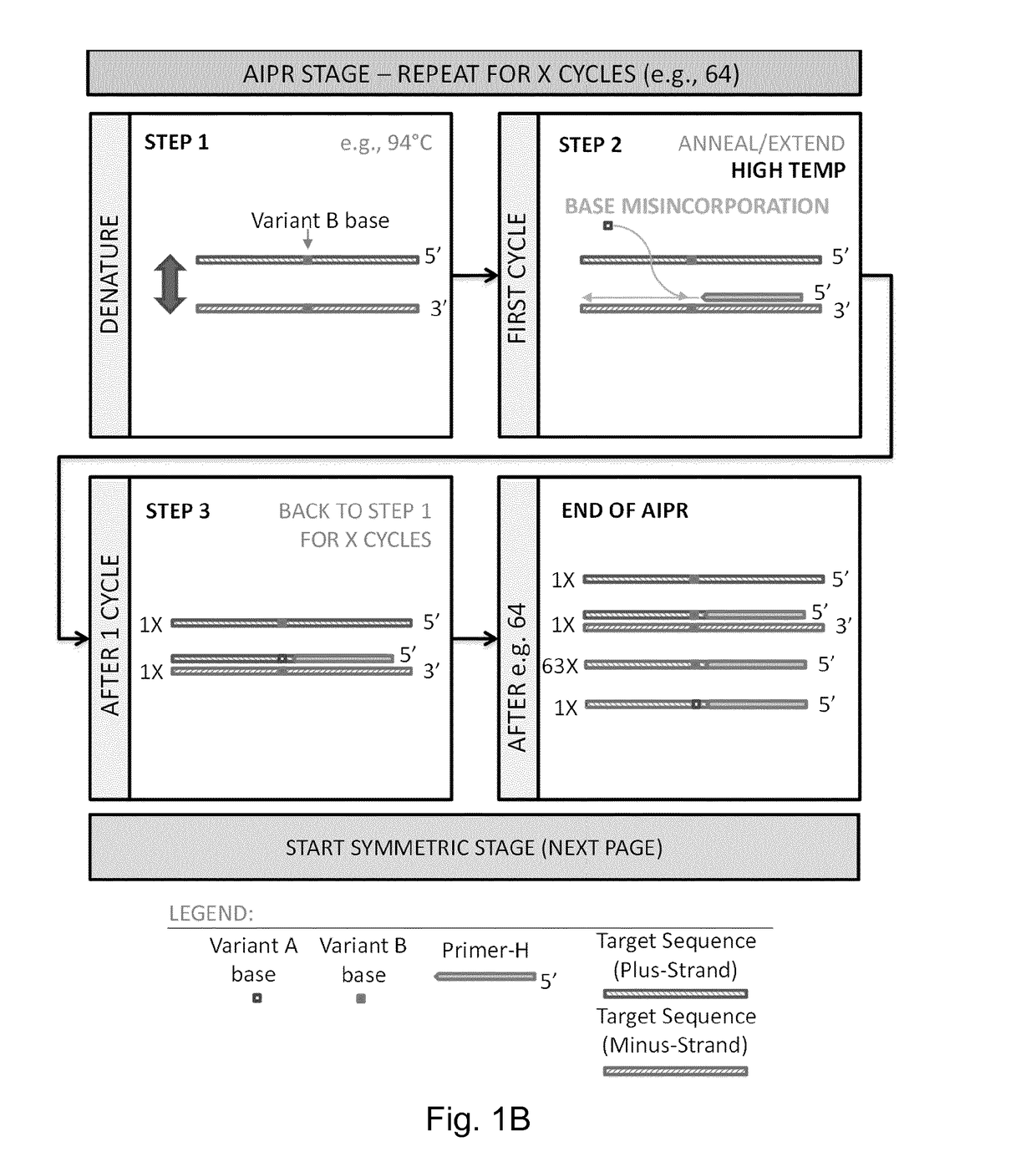Detection of Target Nucleic Acid Variants
a nucleic acid variant and target technology, applied in the field of nucleic acid detection methods, can solve the problems of limiting the maximum achievable sensitivity of a standard digital pcr assay, the error rate of dna polymerase creating a performance barrier to the limit of detection, etc., to achieve simple workflow, increase assay performance, and high sensitivity and specificity
- Summary
- Abstract
- Description
- Claims
- Application Information
AI Technical Summary
Benefits of technology
Problems solved by technology
Method used
Image
Examples
example 1
[0470]IBSAFE (Incremental Before, Symmetric After, Fidelity Enhanced) Methods
[0471]The IBSAFE method is an innovative method to reliably diminish the consequence of any potential DNA polymerase errors so that true-positive reactions have a consistent signal advantage over false-positive reactions.
[0472]The present example describes the IBSAFE method within a droplet digital PCR setup using target-specific primer pairs and fluorescent probes that discriminate between variant (e.g. mutant) and wild-type sequences (alleles). The method principles can however be applied to many different polymerase-based systems.
[0473]The example describes methods for detection of a single nucleotide mutation in a sample which may contain both wild-type and mutant DNA.
[0474]For pilot assays, the high-Tm primers (primer-H) were designed with a length of ˜60bp and tested to operate relatively efficiently at annealing temperatures at ˜72° C. or higher. The probes were designed to overlap the variant base w...
example 2
[0489]IBSAFE methods were performed essentially as described in Example 1 except that an extra step of low temperature PCR was also used. In this example of an IBSAFE method a mismatched sequence is used for Primer-L. This results in a further gap in the effective melting temperature difference between Primer-H and Primer-L during the AIPR stage
[0490]The assay design used in this example is shown in FIG. 7A and includes a primer-H, a wild-type detection probe (WT probe) and a variant detection probe (MUT probe). Furthermore, the assay includes use of a Primer-L comprising 4 mismatched nucleotides. The method used in this example comprises a step of AIPR, a step of low temperature PCR followed by an exponential PCR. The exact thermocycler programme used is shown in FIG. 7B.
[0491]This example is an IBSAFE assay for the KRAS G13D mutation. A 4-base mismatching sequence is included at the 5′ end of the Primer-L and the primer sequence complementary to the target is short. Therefore, Pri...
PUM
| Property | Measurement | Unit |
|---|---|---|
| melting temperature | aaaaa | aaaaa |
| melting temperature | aaaaa | aaaaa |
| melting temperature | aaaaa | aaaaa |
Abstract
Description
Claims
Application Information
 Login to View More
Login to View More - R&D
- Intellectual Property
- Life Sciences
- Materials
- Tech Scout
- Unparalleled Data Quality
- Higher Quality Content
- 60% Fewer Hallucinations
Browse by: Latest US Patents, China's latest patents, Technical Efficacy Thesaurus, Application Domain, Technology Topic, Popular Technical Reports.
© 2025 PatSnap. All rights reserved.Legal|Privacy policy|Modern Slavery Act Transparency Statement|Sitemap|About US| Contact US: help@patsnap.com



